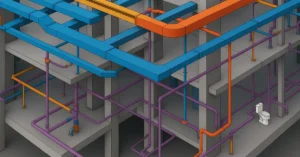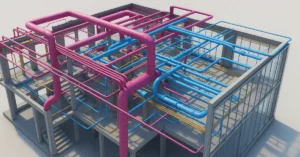The Evolution of Sliding Door Systems: From Traditional to Smart and Automated Solutions

Sliding doors have come a long way since their inception, evolving from simple, manually operated systems to highly sophisticated, smart, and automated solutions. These versatile door systems have not only transformed the way we enter and exit buildings but also revolutionized interior and exterior design. In this article, we will explore the fascinating journey of sliding door systems, from their traditional origins to the cutting-edge smart and automated solutions of today.
The Birth of Sliding Doors
Sliding doors have a rich history that can be traced back to ancient Roman and Japanese architecture. These early designs consisted of heavy wooden or stone panels that required considerable effort to operate. However, the basic concept of doors that slide horizontally remained constant over the centuries.
Traditional Sliding Door Systems
The 20th century saw a significant advancement in sliding door technology, with the introduction of more user-friendly and efficient systems. Traditional sliding doors, often made of wood or glass, were manually operated. They gained popularity in residential and commercial buildings for their space-saving qualities and aesthetic appeal.
Benefits of Traditional Sliding Doors
- Space Efficiency:
Traditional sliding doors are an excellent choice for areas with limited space. They don’t require the floor space that swing doors do, making them ideal for smaller rooms. - Aesthetic Appeal:
The sleek and minimalistic design of traditional sliding doors complements various architectural styles, enhancing the overall aesthetics of a space. - Natural Light:
Glass sliding doors allow an abundance of natural light to flood the interior, creating a more welcoming and energy-efficient environment.
The Rise of Automatic Sliding Doors
As technology continued to advance, traditional sliding doors evolved into automatic sliding doors, also known as power sliding doors. These doors are equipped with sensors and motors, enabling them to open and close automatically when triggered by motion, touch, or remote control.
Benefits of Automatic Sliding Doors
- Convenience:
Automatic sliding doors are exceptionally convenient, especially in high-traffic areas. They open and close quickly, reducing the need for people to exert physical effort. - Energy Efficiency:
These doors are equipped with sensors that can detect when they need to open or close, leading to improved energy efficiency. They can help regulate indoor climate and reduce heating or cooling costs. - Accessibility:
Automatic sliding doors are highly accessible and comply with various accessibility standards, making them an ideal choice for public buildings and facilities. - Security:
Many automatic sliding doors come with advanced security features, such as access control systems and emergency override functions.
The Emergence of Smart Sliding Doors
With the advent of the Internet of Things (IoT) and smart home technology, sliding doors have evolved even further. Smart sliding doors are now integrated into the broader ecosystem of intelligent home automation.
Benefits of Smart Sliding Doors
- Remote Control:
Smart sliding doors can be controlled remotely through a smartphone app. This means you can open or close your doors from anywhere, adding an extra layer of convenience and security to your life. - Integration:
They can be seamlessly integrated with other smart home devices, such as security cameras, voice assistants, and lighting systems, creating a unified and interconnected smart home experience. - Customization:
Smart sliding doors allow for customization of settings, such as adjusting the speed of the door’s operation, setting schedules for automatic opening and closing, and even monitoring the door’s status in real-time. - Enhanced Security:
Smart sliding doors can be equipped with advanced security features like facial recognition, fingerprint scanning, and digital access control, enhancing the safety of your property.
The Future of Sliding Door Systems: Automation and Sustainability
Looking ahead, sliding door systems are likely to continue evolving. Automation will become more refined, with improved energy efficiency and sustainability features. We can expect developments like self-powering doors that harness energy from their operation and advanced materials for increased insulation and durability.
The integration of sustainable technologies, such as solar panels, into sliding door systems may make them even more environmentally friendly. These doors could become essential components in the quest for greener, more energy-efficient buildings.
Conclusion
The evolution of sliding door systems from their traditional roots to smart and automated solutions is a testament to human ingenuity and our ever-growing need for convenience and efficiency. These doors have not only improved our daily lives but have also become a symbol of modernity and sophistication in architecture and design. As technology continues to advance, it’s exciting to imagine what the future holds for sliding door systems, where automation and sustainability will be at the forefront of innovation. Whether it’s in our homes, commercial spaces, or public buildings, sliding doors are set to remain a crucial part of our built environment.
If you’re interested in learning more about architecture firms in Europe, check out this comprehensive list of the top 50 firms compiled by Archgyan. From innovative startups to long-established industry leaders, this list has it all. Take a look and discover some of the most inspiring and influential architecture firms in Europe today.
If you’re interested in architecture and want to learn more about this amazing field, subscribe to our podcast on youtube
For more SketchUp tutorials, head to https://www.sketchupguru.com










